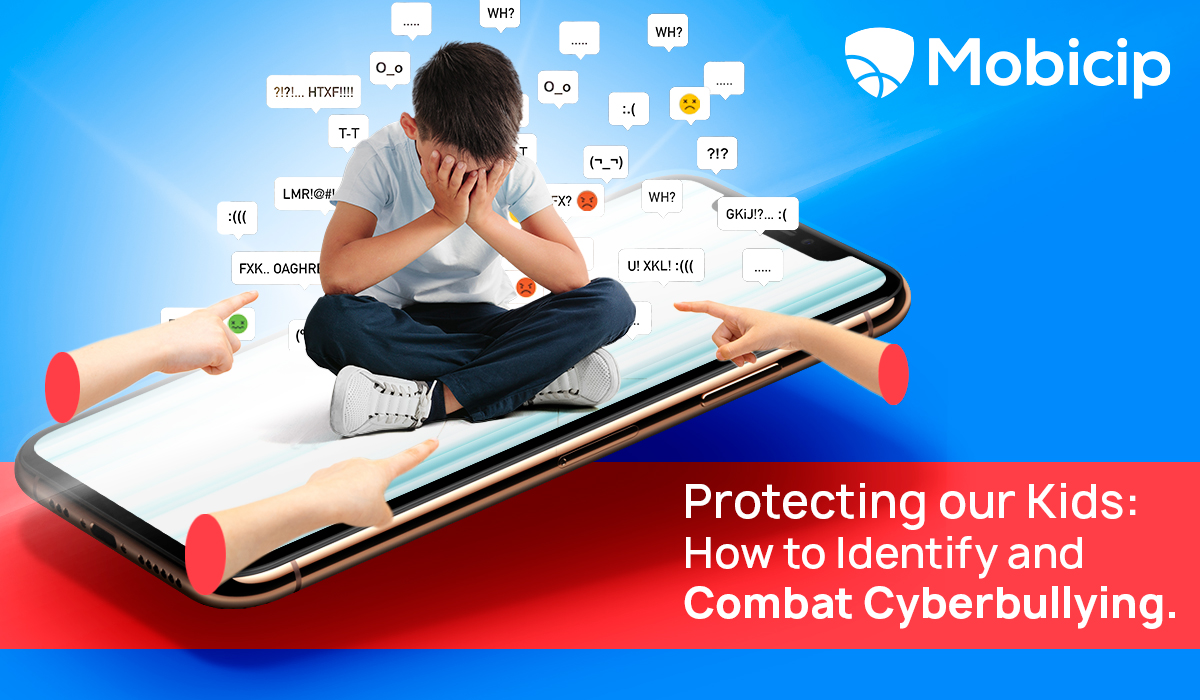Protecting Our Kids: How to Identify and Combat Cyberbullying

“But, making Oliver cry, Noah attempted to be more facetious still; and in his attempt, did what many sometimes do to this day, when they want to be funny.” – Charles Dickens in Chapter 6, Oliver Twist, 1837
Noah Claypoll, the charity boy who tormented Oliver Twist in Charles Dickens’ late nineteenth-century novel, serves as a stark reminder that childhood bullying has deep roots in history. In North America, public awareness and concern about school bullying surged dramatically in the late 1990s. Tragic incidents such as the 1997 murder of Rina Virk shocked communities and highlighted the urgent need to address the issue. Since then, childhood and adolescent bullying has garnered unprecedented attention from the media and academia, both domestically and internationally.
Despite growing awareness, the prevalence of bullying among children and teenagers has reached alarming levels in the past two decades, fueled by the widespread connectivity and anonymity afforded by the digital culture. Nearly 50% of teenagers in America were found by Pew Research to have been victims of some form of cyberbullying.
Introduction and Definition of Cyberbullying
What is Cyberbullying and How is it Different from Traditional Bullying?
Cyberbullying involves the use of digital technologies such as social media, text messages, and online forums to harass, intimidate, or humiliate others. Unlike traditional bullying, cyberbullying can occur 24/7, reaching victims even in the safety of their homes, and the anonymity provided by online platforms often exacerbates its impact.
While traditional bullying occurs face-to-face, cyberbullying takes place online through mediums like social media and messaging apps. It reaches a larger audience and leaves a lasting digital footprint. Unlike traditional bullying, cyberbullying’s virtual nature can make it challenging to recognize and address, prolonging its harmful effects on victims. This makes it all the more important to recognize and address it early.
Why is Cyberbullying a Serious Problem?
Given the extensive use of social media, cyberbullying has become rampant in all of them. A 2024 study showed that cyberbullying occurs on every social media platform, but is found most commonly on Facebook, YouTube, Snapchat, and TikTok, platforms commonly used by youngsters. Some ways in which some of these platforms are used are:
-
Facebook: Facebook remains a hotspot for cyberbullying among both adults and children. The most common forms of cyberbullying on Facebook are nasty comments posted on photos and selfies. Facebook becomes an extension of real-life rivalries as well, and the permanence and reach of these comments can make the consequences more serious
-
Instagram: Instagram being a platform for photos and visual content, has also been known for cyberbullying. The ease of creating fake accounts on Instagram makes it easy for trolls and anonymous bullies to target their victims.
-
Twitter: This site is often used by bullies to spread false and damaging information quickly to a wide audience.
-
Snapchat: Stories and messages can disappear once they are viewed by the recipient, and this makes it safe for bullies to bully their victims without a permanent trace.
-
TikTok: The duet feature in TikTok allows cyberbullies to respond to other people’s videos by pairing them with disturbing videos side-by-side.
While cyberbullying has been associated with extreme outcomes like murder, suicide, and real-life violence, its impact can also manifest in subtler yet serious ways. Mental health issues, heightened stress and anxiety, depression, violent behavior, and diminished self-esteem are among the effects of cyberbullying. Even after the bullying ceases, its emotional repercussions can endure. Multiple Studies have shown that the mental health of adolescent girls is compromised more than that of boys due to cyberbullying.
Victims of cyberbullying often experience lasting feelings of embarrassment, worsened by the seemingly permanent nature of online harassment, especially when conducted through social media posts that linger indefinitely. This is particularly the case with bullying associated with race, gender, and sexual orientation. This sense of perpetual exposure can lead to overwhelming distress.
Furthermore, victims may find themselves excluded by peers who fear becoming targets of cyberbullying by association. This social isolation leaves victims with nowhere to turn for support, whether at school or home, further exacerbating their plight.
The effects of cyberbullying extend beyond psychology; they can also manifest physically. Intense stress and anxiety resulting from cyberbullying can precipitate a range of physical ailments, including insomnia, gastrointestinal issues, and unhealthy eating habits.
How Can We Protect Our Kids from Cyberbullying?
Recognizing cyberbullying may seem clear-cut when your child shares hurtful messages or posts. Yet, some instances may be subtle, requiring careful observation to safeguard young individuals from harm. A recent study showed that only 11% of children who are cyberbullied confide in their parents about it.
There are three steps to protect our children from Cyberbullying:
-
Understanding the various types of cyberbullying
-
Recognizing the signs of cyberbullying in our children
-
Taking proactive and preventive steps to combat cyberbullying
Types of cyberbullying
The following are the most common types of cyberbullying.
Harassment
Harassment involves sending repeated, offensive, or threatening messages to cause harm to the recipient. This can include insults, derogatory remarks, or even threats of physical violence. For instance, continuously sending messages to someone, calling them derogatory names, or threatening to harm them or their loved ones would constitute harassment.
Example: An individual repeatedly sends threatening messages to a peer, warning them to stay away from a particular social group or face consequences.
Flaming
Flaming refers to engagement in online arguments or conflicts, often using inflammatory language to provoke or upset others. This can occur in various online forums, social media platforms, or comment sections where individuals engage in heated debates that escalate into personal attacks.
Example: A heated discussion on a social media post devolves into a barrage of insults and name-calling between participants, with each party trying to outdo the other in aggression.
Trolling
Trolling involves deliberately provoking or upsetting others by posting inflammatory or irrelevant comments. Trolls, are usually anonymous and seek attention or amusement by disrupting online discussions or communities. They may post offensive or controversial content with the intention of eliciting emotional reactions from others.
Example: A troll comments on a serious discussion thread with nonsensical remarks or offensive jokes, disrupting the conversation and derailing the topic.
Impersonation
Impersonation entails pretending to be someone else online to deceive or manipulate others. This can involve creating fake social media profiles or using someone else’s identity to spread false information or engage in harmful behavior.
Example: An individual creates a fake social media account using a classmate’s name and photo, then posts derogatory comments or shares embarrassing content to tarnish their reputation.
Outing
Outing involves sharing someone’s private or sensitive information without their consent. This could include revealing personal secrets, private photos, or confidential messages, often with the intention of humiliating or embarrassing the individual.
Example: A person shares screenshots of private messages or intimate photos of a peer without their permission, exposing personal details or secrets to a wider audience.
Cyberstalking
Cyberstalking entails continuously monitoring or harassing someone online, causing fear or distress. This can involve persistent surveillance, threats, or unwanted communication that intrudes upon the victim’s privacy and sense of safety.
Example: An individual repeatedly sends threatening messages, monitors their target’s online activity, and shows up uninvited to places they frequent, instilling fear and discomfort.
Sexting
Sexting involves sending sexually explicit messages, images, or videos without consent, often leading to embarrassment or blackmail. This can occur between peers or involve adults exploiting minors for sexual purposes.
Example: A person pressures their partner into sending nude photos, and then shares them without consent as a form of revenge after a breakup, causing humiliation and distress to the victim.
These examples illustrate the various forms of cyberbullying and the harmful impact they can have on individuals’ well-being and mental health.
Signs of Cyberbullying
The indicators that your child or ward might be experiencing cyberbullying could be subtle, manifesting as behavioral shifts, emotional disturbances, or physical ailments.
Behavioral
Victims may exhibit alterations in their online habits, such as:
-
Avoiding Certain Apps or Platforms: They might refrain from using specific social media platforms or messaging apps where cyberbullying occurs.
-
Reduced Online Activity: Victims may spend less time online or express reluctance to use electronic devices altogether.
Changes in social behavior include being withdrawn, not engaging with family and friends, not leaving the house or room, etc.
Emotional
Victims often display emotional distress, such as:
-
Heightened Anxiety: They may express feelings of nervousness, fear, or apprehension regarding their online experiences.
-
Episodes of Depression: Victims may exhibit prolonged periods of sadness, hopelessness, or despair, particularly after engaging with digital devices or online interactions.
Physical
Victims may show signs of physical distress, including:
-
Bruises or Scratches: Physical injuries that cannot be explained or attributed to any known cause, suggesting potential offline harassment stemming from online abuse.
-
Changes in Eating or Sleeping Patterns: Victims may experience disruptions in their eating or sleeping routines, such as loss of appetite, difficulty falling or staying asleep, or excessive sleeping.
-
Headaches or Stomach Aches: Physical symptoms such as headaches, migraines, stomach pains, or gastrointestinal discomfort may arise due to the stress and anxiety associated with cyberbullying.
Proactive Steps to Combat Cyberbullying
-
Comfort to confide: Foster a nurturing environment where your ward feels safe to share their emotions and experiences. Open communication without finger-pointing is essential. Knowing that the adult “has their back” can go a long way in instilling confidence in the child.
-
Social solidarity: Reach out to school officials, whether it’s the principal, counselor, or teacher, to apprise them of the cyberbullying situation. Seek solidarity and assistance from the school community in devising a comprehensive plan of action that prioritizes your ward’s well-being and security.
-
Sane advice: Counsel your ward against responding to cyberbullying messages or threats, as such reactions often worsen the situation and empower the bully. Encourage constructive actions and enlist the support of trusted adults to navigate the challenges effectively.
-
Evidence preservation: Preserve evidence of cyberbullying by preserving screenshots of threatening messages, images, or texts. These tangible records can serve as valuable evidence when escalating the issue to relevant authorities or involving the bully’s parents or employers.
-
Professional Guidance: Consider seeking the guidance of a therapist or counselor to assist your ward in processing the emotional toll of cyberbullying.
-
Preventative Measures:
-
Initiate conversations with your ward about the importance of online safety and the rationale behind monitoring practices.
-
Familiarize yourself with the online platforms frequented by your ward, encouraging transparency and open discussions about their digital interactions.
-
Establish boundaries on technology usage by centralizing devices in communal areas and implementing time constraints. Leverage parental control features to monitor and regulate online activities proactively.
-
Utilize device settings to block communication from specific individuals, effectively thwarting further cyberbullying attempts.
-
Explore monitoring tools or applications like Mobicip to track your ward’s social media engagement and online behavior.
There are laws and regulations imposed in various countries, to stop cyberbullying. For example, in America, almost all states have various criminal laws that might apply to bullying behaviors, depending on the nature of the act. An informative interactive map by the Cyberbullying Research Center shows the cyberbullying regulations in all the States in the USA.
What if your child is a cyberbully?
Some children may not even be aware that they are being cyberbullies. Some may downplay cyberbullying and justify it as a joke. The child must be made to understand that incident that continues to make another person feel guilt, shame, sadness or fear is not a joke and should be stopped.
Address your child’s cyberbullying behavior promptly and firmly. Open a non-judgmental dialogue to understand the underlying reasons behind their actions. Emphasize empathy and the impact of their behavior on others. Set clear consequences for their actions and establish guidelines for respectful online conduct. Encourage them to take responsibility, apologize to the victim, and actively work towards positive change. Cyberbullying may hide other behavioral issues such as aggression, hyperactivity, or impulsivity, as well as substance abuse. Seek professional guidance if necessary, to address underlying issues contributing to their behavior and provide ongoing support and guidance to foster empathy and accountability.
Set a positive example for your children by demonstrating responsible digital behavior. Educate them about both the advantages and risks of the online world. By maintaining composure and refraining from using hostile language in your own online interactions, you can influence them to do the same. Engage in discussions about constructive ways to handle disagreements online, emphasizing the importance of respectful communication.
How Can Mobicip Help Parents Monitor and Manage Their Children’s Online Activity and Screen Time?
Mobicip offers a comprehensive suite of tools and features designed to empower parents to protect children from cyberbullying. Here’s how Mobicip can assist parents in safeguarding their children’s digital experiences:
-
Content Filtering and Blocking: Mobicip enables parents to filter and block inappropriate or harmful content across various online platforms and websites. With customizable filtering levels based on age-appropriateness, parents can ensure that their children are exposed only to content suitable for their developmental stage.
-
Time Management and Screen Time Control: Parents can set time limits and schedules for their children’s online activities, helping them strike a healthy balance between screen time and other essential activities such as homework, chores, and outdoor play. By enforcing designated screen time restrictions, Mobicip empowers parents to cultivate responsible digital habits in their children.
-
App Monitoring and Usage Insights: Mobicip provides detailed insights into the apps and services accessed by children, allowing parents to monitor their online behavior comprehensively. By tracking app usage patterns and identifying potential red flags, parents can intervene promptly and address any concerning online activities.
-
Real-Time Activity Reports and Alerts: With Mobicip’s real-time activity reports and alerts, parents receive timely notifications about their children’s online behavior, including attempts to access blocked content or exceed designated screen time limits. This proactive approach enables parents to stay informed and take immediate action when necessary.
-
Remote Device Management: Mobicip offers remote device management capabilities, allowing parents to adjust settings, modify restrictions, and monitor their children’s online activity from anywhere, at any time. Whether at home or on the go, parents can maintain control over their children’s digital experiences effortlessly.
-
Customizable Profiles and Settings: Mobicip enables parents to create individualized profiles and settings for each child, tailoring content filters, screen time limits, and restrictions according to their unique needs and preferences. This flexibility ensures that parental controls are personalized and effective for every member of the family.
-
Educational Resources and Support: In addition to its monitoring and management features, Mobicip offers educational resources and support to help parents navigate the complexities of digital parenting effectively. From articles and guides to expert advice and tips, Mobicip equips parents with the knowledge and tools they need to promote safe and responsible online behavior in their children.
By leveraging Mobicip’s comprehensive parental control solutions, parents can foster a healthy digital environment for their children, promoting balanced screen time usage and ensuring their safety and well-being in today’s interconnected world.






